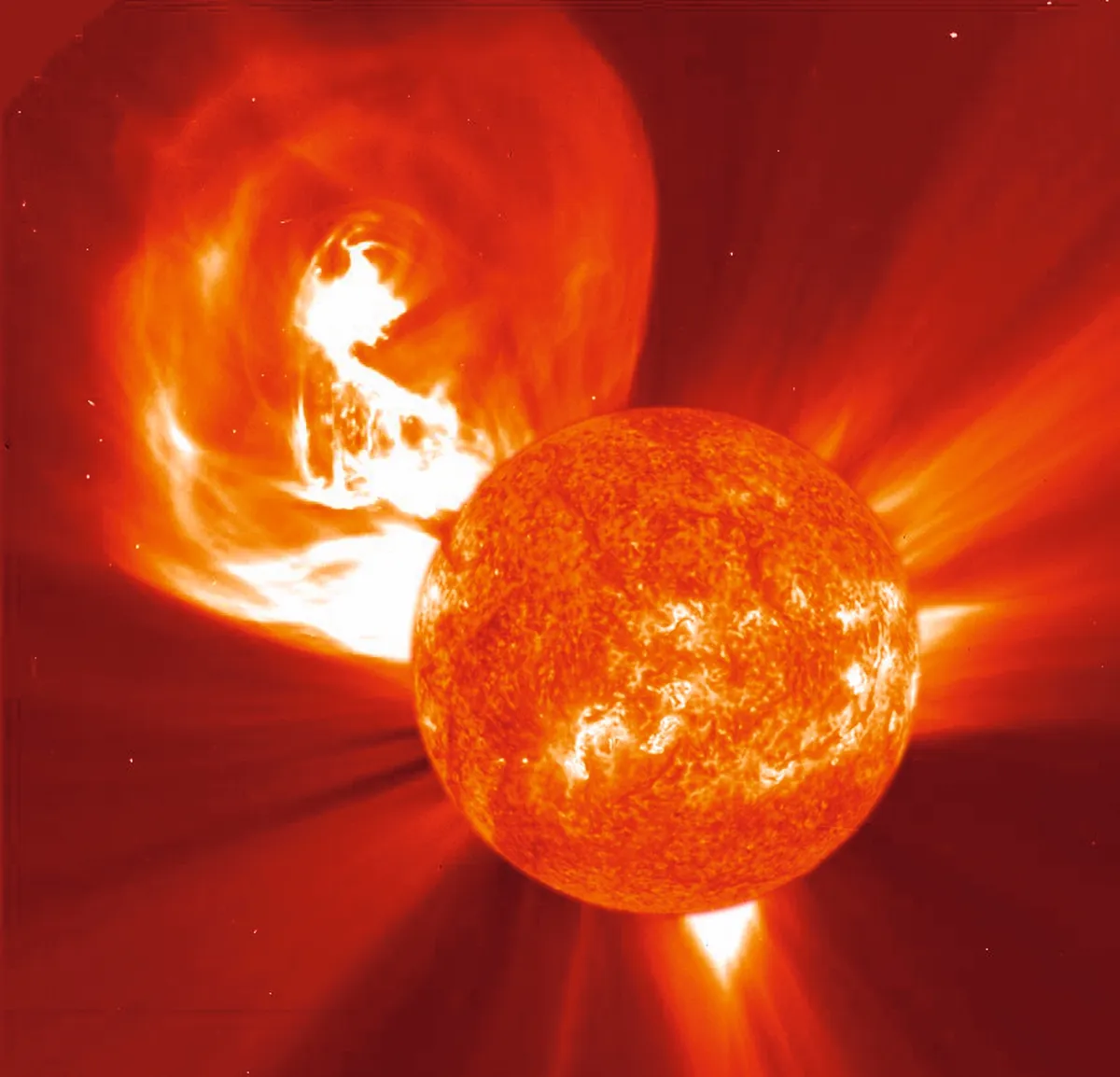Many of us will have commented on the weather at some point, or remarked on the beauty of a bright red sunset. The Sun is what drives our weather, gives us seasons and makes life possible, and there's so much we're still finding out.
But how old is the Sun? How does it burn without oxygen? And, how hot is the Sun? Read on for answers to these and more.
For those who missed it, you can check out our explainer on the summer solstice, and our gallery of the best pictures from the solar eclipse in 2021. If you're into astronomy, why not plan ahead with our full Moon UK calendarandastronomy for beginners guide?
How far is the Sun from Earth?
The distance between the Sun and Earth is, on average, about 149.6 million kilometres. That means that the Sun’s light takes about 8.3 minutes to reach Earth. Since the Earth’s orbit is slightly elliptical, at its closest point to the Sun (called ‘perihelion’) it is about 147 million kilometres away, while at its furthest point (called ‘aphelion’) it is about 152 million kilometres away.
This 3 per cent or so difference means sunlight is on average 7 per cent stronger at perihelion than at aphelion. But perihelion actually occurs in early January, in the dead of winter for the northern hemisphere. This demonstrates that it is the Earth’s axial tilt which causes the seasons, rather than its proximity to the Sun.
How does the Sun burn without oxygen?
The Sun is not ‘burning’ in the traditional sense of the word. Instead of chemically combining with oxygen, such as carbon does when coal is burnt, the Sun’s fuel is undergoing thermonuclear reactions. Most of its energy is produced by the fusion of hydrogen into helium deep in the Sun’s core where the temperature and pressure are huge.
Astronomers calculate that the Sun is losing about 4.26 million tons of mass every second due to fusion (or about 140 quadrillion tons per year). This is only 0.000000007 per cent of the Sun’s total mass. This means that even at the end of its life, in about five billion years' time, the Sun will still have 99.966 per cent of its current mass!
Read more about the Sun:
- What colour is the Sun?
- NASA’s Parker Solar Probe ‘touches’ Sun for the first time ever
- Watch: Solar Orbiter captures Sun's coronal mass ejection on camera
How big is the Sun?
The Sun’s radius is about 696,342km, which is roughly 109 times the Earth’s radius. This means that you could fit more than 1.3 million planet Earths inside the Sun.

How hot is the Sun?
The Sun is hotter in the middle than at its surface. Right at the core of the Sun, the temperature is about 15,000,000°C, hot enough for thermonuclear reactions to take place. But at the surface of the Sun, which scientists call the ‘photosphere’, the temperature is only 5,500°C. Surprisingly though, the Sun’s outer atmosphere is actually far hotter than the surface; it is about 2,000,000°C, with some regions even reaching 20,000,000°C.
There is, as yet, no complete explanation for the high temperatures in the solar atmosphere, but it is almost certainly a result of the Sun’s magnetic field.
How strong is the Sun’s magnetic field?
The most recent measurements have shown that typical magnetic fields just above the solar surface lie between two gauss and six gauss. By way of comparison, the Earth’s magnetic field at the surface ranges between 0.25 gauss and 0.65 gauss, about 10 per cent that of the Sun’s.
These are actually quite weak magnetic fields. The strength of a fridge magnet is about 100 gauss. The magnet in a typical audio loudspeaker is about 10,000 gauss, while MRIs use magnets of about 30,000 gauss. The strongest known magnetic fields, around objects called ‘magnetars’ (a type of neutron star), can be as high as a quadrillion gauss. Such magnetic fields would warp all the atoms in your body, killing you instantly!

How old is the Sun?
The Sun is about 4.57 billion years old. It is middle-aged and will live for another five billion years or so. As the Sun reaches old age it will expand and brighten to become a ‘red giant’ star, eventually engulfing Mercury and Venus. Earth may just about survive the expanding Sun, but about three billion years from now the Sun’s energy output will have evaporated Earth’s oceans and atmosphere anyway!
After about a billion years as a red giant, the Sun will shake off its outer layers, forming a beautiful ‘planetary nebula’. Left behind will be a small, hot ‘white dwarf’, which will survive, cooling slowly, for maybe another trillion years.
Read more:
- Does sunshine make us happier and healthier?
- Do the Sun’s rays get further apart from each other over distance?
- Will increased Sun activity make climate change worse?
- If the Sun is constantly losing mass via nuclear fusion, how come it’s not getting any smaller?
To submit your questions email us at questions@sciencefocus.com (don't forget to include your name and location)
